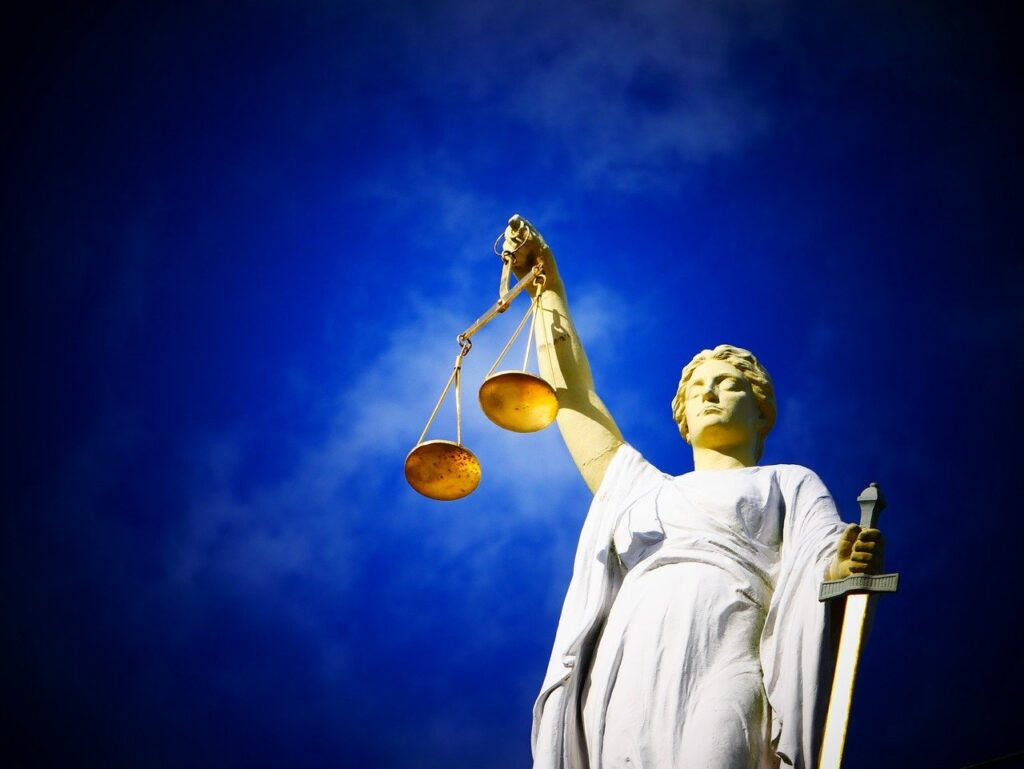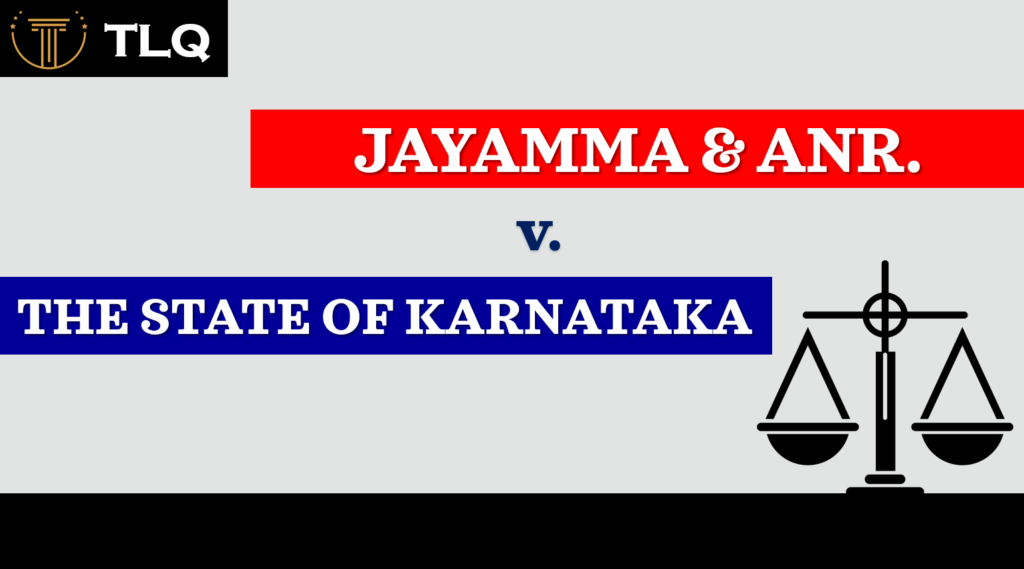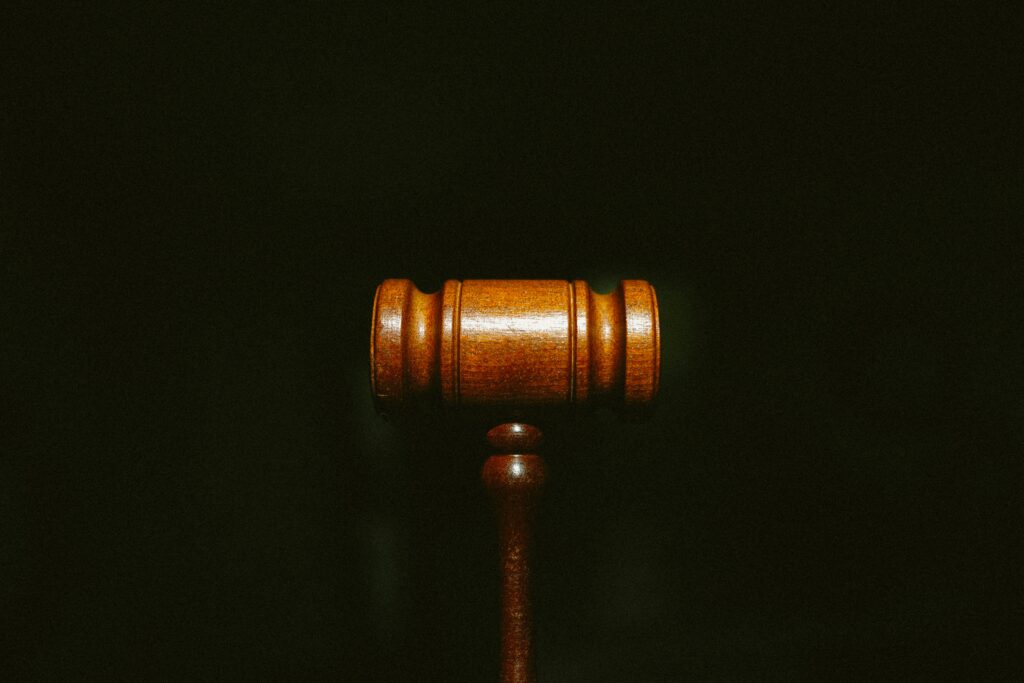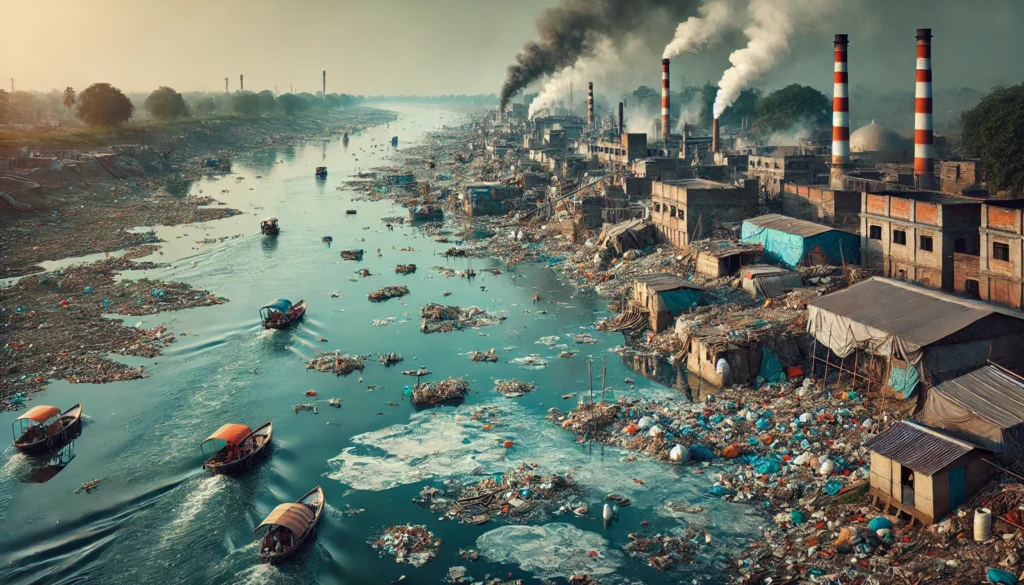Published On: October 7th 2025
Authored By: Ishika Aggarwal
Maharaja Agrasen Institute of Management Studies
Abstract
Freedom of speech is often called the backbone of a democracy1 — but what happens when that very freedom starts being used to divide rather than to express? In recent years, India has seen a surge in hate speech across social media, political platforms, and even everyday spaces. While Article 19(1)(a)2 of our Constitution guarantees free speech, Article 19(2)3 also allows the State to impose “reasonable
restrictions.” But what counts as reasonable? On which scale is it measured where free speech ends and from where hate speech takes over? This article explores this thin and often blurry line — how our laws have tried to handle it, where they fall short, and why clarity is urgently needed. By looking at recent court rulings, loopholes in existing legislation, and the real-world impact of online and offline hate, the piece offers a grounded, practical approach to reform — one that protects expression while also protecting communities.
Introduction
In a democracy, speech is not merely a right—it is a responsibility. Words carry the ability to influence, challenge, stir emotions, and even divide.They give shape to ideas, challenge institutions, and build collective movements. But just as they can be tools of empowerment, they can also become instruments of harm. In a nation as diverse as India – linguistically, religiously, and culturally — speech is not merely a means of expression but a reflection of identity, dissent, and belonging. Yet, in recent years, the boundary between free speech and hate speech has become increasingly blurred. From social media outrage to political rallies, public discourse has witnessed a surge in rhetoric that some see as protected expression, while others view it as incitement to division. The challenge lies not in denying the right to speak, but in understanding when speech ceases to be dialogue and begins to be dangerous.
The Indian Constitution, under Article 19(1)(a), affirms every citizen’s fundamental right to freely express their thoughts and opinions.However, this right is not absolute. Article 19(2) allows the State to impose “reasonable restrictions” in the interest of sovereignty, security, public order, decency, morality, and a constitutional balancing act that has invited deep legal and ethical debates.The core issue lies is whether speech can or should be regulated, but how a pluralistic democracy like India decides what qualifies as hate speech without compromising the core of free speech.
This article examines the constitutional grounding of free expression, the evolving legal and judicial understanding of hate speech, and the moral complexities that arise when the two conflict. Rather than framing a debate of absolutes, it invites reflection—on whether the freedoms we fiercely protect may sometimes shield the very forces that threaten them. Through an understanding of constitutional protections, the evolving legal framework, and the real-world consequences of unchecked expression, it seeks to explore whether India’s balance between liberty and restraint is holding—or whether it, too, is beginning to fracture. The aim is not to declare a winner between rights and restrictions, but to understand whether existing laws uphold justice or lean toward silencing.
The Constitutional Bedrock of Free Speech
In a democracy, speech is not merely a right—it’s a relationship. Between the speaker and the listener. Between the citizen and the State. Between dissent and order. And in the age of the internet, where every sentence has the potential to echo endlessly, that relationship has become more complicated than ever.
We speak to challenge. To belong. To protest. And sometimes, to provoke. But what happens when speech begins to sting—when it is no longer disagreement but deliberate injury? Does the right to speak include the right to hurt?
India, with its diverse identities and rich history, continues to grapple with this question. The Constitution safeguards free speech because it recognizes that democracy cannot grow in silence. However, it also balances this freedom with responsibility, understanding that without guidance, words can break peace and damage trust. The right to speak is more than a legal privilege—it is a cultural, political, and emotional action. It allows people to express who they are, take part in public life, and question the way things are. In India, our constitution protects this under Article 19(1)(a) of the Constitution, which guarantees freedom of speech and expression.
But even the most sacred rights are never absolute. Article 19(2) of the same Constitution recognizes that speech, if not controlled , can cause harm. It permits the State to impose “reasonable restrictions”4 when expressions pose a threat to public order, morality, decency, or national security. This legal design is deliberate—it respects the vitality of open dialogue, while drawing a moral and constitutional boundary where harm begins.
This is the point where the concept of hate speech enters the legal conversation. In recent years, the line between “speech” and “hate speech” has grown blurrier. Content once dismissed as “mere opinion” is now seen through a sharper lens, particularly when it risks inciting violence or reinforcing historical prejudices. From university campuses to online platforms, from parliament halls to street protests, the struggle to define what can and cannot be said is more relevant—and more contentious—than ever.
Hate Speech: The Silence it Forces and the Space it Shrinks
The law does not offer a single, universally accepted definition of hate speech5. Hate speech is not simply about offensive words; it’s about words designed to divide. It identifies groups by religion, caste, gender, or ethnicity—not to understand, but to isolate. And in doing so, it turns public spaces into battlegrounds, and democratic rights into weapons. And maybe that’s part of the challenge—it often hides in plain sight.
It can sound like a joke, a protest, or even a historical claim. But beneath its surface, it seeks to alienate. Hate speech is not simply about offensive words; it’s about words designed to divide. It identifies groups by religion, caste, gender, or ethnicity—not to understand, but to isolate. And in doing so, it turns public spaces into battlegrounds, and democratic rights into weapons.
When hateful language is amplified—especially in digital spaces—it tends to drown out more moderate, diverse, and vulnerable voices. The danger lies not only in what is said, but in what is silenced because of it.
This is where the law, already vague on definition, struggles. With no consolidated statutory meaning under Indian law, courts and legislatures often rely on scattered provisions across the Indian Penal Code, and even then, with inconsistent application.This creates not just uncertainty—it also opens the door to abuse.
The Legislative Framework: Where the Law Stands and Where It Falters
Regulating hate speech in India is not as straightforward as following a clear, well-marked road, but rather like moving through an unplanned, winding alley—full of turns, missing parts, and sudden dead ends.No single law exists that clearly defines or comprehensively regulates hate speech. Instead, the task is handled by a collection of different rules and sections: Section 153A of the Indian Penal Code (IPC)6 deals with inciting hatred between groups; Section 295A7 tackles acts that deliberately insult religious beliefs; Section 505 8covers statements that could cause unrest; the Representation of the People Act sets limits on speeches that could stir up violence during elections; and certain rules under the Information Technology Act aim to deal with harmful online content.
At first glance, this patchwork of laws might seem sufficient.But in reality, these laws work separately from each other. Judges often have to make decisions on a case-by-case basis about where the line between free speech and hate speech lies, without a single, clear standard to guide them. This lack of a clear benchmark allows two dangerous possibilities: harmful speech can go unnoticed, and genuine criticism might be unfairly prevented in the name of keeping things orderly.
This problem becomes more pronounced during politically sensitive times. Laws meant to protect vulnerable groups can sometimes be used to suppress opposing voices. A critical remark about those in power could be labeled as “provocative,” while divisive comments from prominent individuals might be ignored as just political debate. When the focus is on who is speaking rather than what is being said, public trust in the fairness of the system starts to weaken.
In the digital landscape , the situation is even more complex . Online, messages can rapidly reach millions, much faster than the legal system can respond. Enforcement often focuses on smaller or less powerful individuals, such as regular citizens, students, or journalists. Meanwhile, large political campaigns, organized groups of online trolls, and powerful platforms can spread harmful messages with little to no consequences.
This inconsistent and fragmented approach means the issue is not just legal—it is also a matter of morality and politics.Without clear definitions, consistent standards, and fair enforcement, laws against hate speech can drift away from their original goal of protecting communities. Instead, they can become tools for shaping public opinion. In a democracy, this risk is simply too great to ignore.
When Speech Becomes Harm: The Real-World Impact 9
The harmful effects of hate speech go beyond the words themselves. In a society as varied and closely connected as India, the results can spread widely—sometimes subtly, weakening trust between different groups, and at other times violently, leading to public conflicts. The damage extends beyond those directly affected, harming the social relationships that hold a democracy together.
At its foundation, democracy is not only a set of legal rules; it is also a way of communicating and discussing differences peacefully. Hate speech attacks its core principle. It changes spaces meant for debate into places of hostility. People don’t say anything because they don’t have anything on their mind to speak , but because they fear the consequences or the backlash they would face by doing so . This self-censorship is harmful to democracy in the same way that censorship is—except that it comes not from the government, but from the fear and tension among people themselves.
Impact on Individuals and Communities
The most direct harm is personal.When hate speech is repeated and accepted as normal, it slowly takes away a person’s sense of security and feeling of belonging. It strengthens harmful stereotypes, increases prejudice, and makes discrimination seem acceptable. Victims often begin to believe the hostility directed at them, leading to isolation and a reluctance to speak out.
For instance, there has been an increase in online abuse targeting journalists, women activists, and members of minority groups.
This is not just about feeling upset—it is about being scared, being pushed out of public discussions, and having certain views ignored. Communities also feel the impact. When speech becomes too aggressive, it can turn neighbors into enemies, reduce local trust, and create a “us versus them” attitude. Over time, these divisions become stronger, making it harder to resolve conflicts and increasing the chances of real conflict.
From Words to Violence
The move from harsh language to physical violence is often quicker than we think. Hate speech may not always cause violence directly, but it sets the stage for it. By showing certain groups as dangerous or outsiders, it removes some of the moral and social barriers that might prevent people from harming them.
For example, the riots in Muzaffarnagar in 2013 were preceded by a lot of inflammatory speech, both online and in person, that increased tensions between different communities.
The Erosion of Democratic Discourse
A strong democracy depends on thoughtful discussion, the ability to disagree, and a shared sense of identity—but hate speech, if not controlled, can make public conversations dangerously divided.
Take the Delhi riots in February 2020, which occurred during protests against the Citizenship Amendment
Act. Reports and journalists observed how harsh statements from some political leaders—widely shared—created tensions between communities.A minister issued veiled warnings directed at the protesters. Within hours, violence erupted, killing many and damaging property in different areas. Although not a legal case, this example shows how inflammatory speech can push a democracy to the breaking point.
In the legal world, the Campaign Against Hate Speech v State of Karnataka 10case shows a serious problem. In this case, a public interest group asked a High Court to order the government to create rules against hate speech, especially in the context of the pandemic. However, the court refused, saying that hate speech does not have a legal definition and that the judiciary cannot make laws. This left a major gap in protecting democracy.
What do these events show? When public statements are not properly controlled, they damage confidence in democracy—not only through violence, but also through the growing acceptance of fear and distrust.
The Digital Multiplier
The internet has given hate speech an unprecedented reach and speed. A single post, video, or message can be shared millions of times within hours, often without proper context or fact-checking. Online anonymity encourages people who might not say such things in person to speak out, while algorithms boost content that causes strong emotions, including anger. What is often missed is that online hate does not stay online. It can lead to real-world harassment, organized boycotts, or even mob attacks. The distance between a post and a protest is now extremely small.
Where Do We Draw the Line?
The tension between free speech and its regulation is not about choosing one over the other—it is about determining where one ends and the other begins. In a pluralistic democracy like India, this “line” is not just a legal threshold, but a moral and political choice. Too far in one direction, and we risk silencing legitimate dissent. Too far in the other, and we allow speech that corrodes public trust and endangers lives.
The Constitution already attempts this balance through Article 19(2), which permits reasonable restrictions in the interest of sovereignty, security, public order, and morality. But “reasonable” is a subjective word—it shifts with political climate, social pressures, and judicial interpretation. This makes the line between liberty and safeguard inherently unstable.
This tension is clearly reflected in The Pravasi Bhalai Sangathan v Union of India (2014) 11 SCC 477 case .11 The Supreme Court acknowledged the dangers posed by hate speech but refused to lay down binding guidelines, observing that legislation is Parliament’s responsibility. While this stance preserved the separation of powers, it also left the regulation of hate speech largely dependent on fragmented laws and inconsistent enforcement.
At the same time, the Shreya Singhal v Union of India (2015) 5 SCC 1 12judgment—where Section 66A of the IT Act 13was struck down—reinforced the principle that restrictions must be narrowly tailored and proportionate. The Court emphasized that vague or overbroad laws can have a chilling effect on free speech, discouraging citizens from speaking at all.
These two cases together reflect the judicial tightrope: preserving constitutional freedoms while recognizing that unregulated speech can cause tangible harm. If liberty is the oxygen of democracy, safeguards are its safety valves—both must work in tandem. The real challenge lies in ensuring that the “line” we draw today will not become tomorrow’s weapon of suppression.
Proposed Reforms: Toward Clarity and Consistency
Reforming hate speech regulation in India is not about tipping the scales in favour of liberty or restraint, it’s about making sure the scales themselves are sturdy. Today, our framework suffers from two flaws: definitional vagueness and selective enforcement. Both erode trust, both weaken democracy.
A Uniform, Statutory Definition of Hate Speech
The first step must be legislative clarity. A single, consolidated definition of hate speech — one that is precise enough to guide enforcement, yet flexible enough to adapt to evolving contexts — should replace the current patchwork of provisions scattered across the IPC, the Representation of the People Act, and the IT Act. This definition must draw from existing Law Commission recommendations, international standards, and constitutional safeguards.
Independent Oversight to Prevent Political Misuse
Laws are only as fair as the people who enforce them. Establishing an independent oversight body — perhaps under the National Human Rights Commission — could ensure that hate speech provisions are applied consistently, regardless of political affiliation or social standing. This would reduce the chilling effect on legitimate dissent while ensuring that truly harmful speech is addressed.
Strengthening Digital Accountability
The speed and reach of digital platforms demand a regulatory approach that is both rights-respecting and technologically competent. Platforms must be required to follow transparent takedown protocols, disclose moderation algorithms, and allow independent audits to ensure they are not amplifying harmful rhetoric under the guise of neutrality.
The “Democratic Resilience Clause”
The Constitution already provides for “reasonable restrictions,” but those restrictions are reactive — they step in after harm has been caused. What if India created a proactive legal doctrine, similar to Germany’s militant democracy principle, which allows democratic institutions to protect themselves against actors who use constitutional freedoms to dismantle democracy itself?
This wouldn’t mean blanket censorship — it would require a narrowly tailored constitutional amendment or judicial doctrine that empowers institutions to act early against speech that deliberately undermines democratic equality, fuels systemic discrimination, or incites irreversible harm to the Republic’s pluralist structure.
It’s a bold suggestion because it shifts the conversation from managing harm after the fact to preventing it at the root — but if drafted with precision, it could set India apart as a democracy that refuses to be tolerant of the intolerant, while still respecting fundamental rights.
CONCLUSION
The debate on hate speech and free speech is not a battle between liberty and censorship—it is a test of how a democracy defines itself. Laws can draw boundaries, but they cannot, on their own, create a culture where disagreement thrives without dehumanisation. The true challenge lies not merely in curbing the most harmful forms of speech, but in fostering the most constructive and meaningful expressions.
India’s constitutional promise rests not only on the right to speak, but on the ability of all voices to be heard without fear of being drowned out by hostility. If our safeguards are applied selectively, they risk becoming tools of power rather than shields of justice. The choice before us is whether we see speech as a weapon to win momentary battles, or as a bridge to preserve the republic’s plural soul.
Perhaps the more urgent question is not “How far can we speak?” but “How well can we listen?” Because in the long arc of democratic life, it is listening—the willingness to engage, to disagree without destruction—that will determine whether liberty remains a living right or fades into a hollow ideal.
REFERENCES
1 UN, Freedom of Speech, Principles of Democracy https://www.principlesofdemocracy.org/speech-dem accessed 11 August 2025.
2 Constitution of India, art 19(1)(a).
3 Constitution of India, art 19(2).
4 JusCorpus, ‘HATE SPEECH AND ARTICLE 19(1)(a): ANALYZING FREE SPEECH V REASONABLE RESTRICTIONS’ (JusCorpus, 2025) https://www.juscorpus.com/hate-speech-and-article-191a-analyzing-free-speech-v-reasonable-restrictions/ accessed 30 March 2025.
5 UN, ‘What Is Hate Speech?’ (United Nations) https://www.un.org/en/hate-speech/understanding-hate-speech/what-is-hate-speech accessed 11 August 2025.
6 Indian Penal Code 1860, s 153A.
7 Indian Penal Code 1860, s 295A.
8 Indian Penal Code 1860, s 505.
9 John T Bennett, The Harm in Hate Speech: A Critique of the Empirical and Legal Bases of Hate Speech Regulation (2016) 43 UC Law Const Q 445 https://repository.uclawsf.edu/hastings_constitutional_law_quaterly/vol43/iss3/1 accessed 11 August 2025.
10 Campaign Against Hate Speech v State of Karnataka (Karnataka High Court, 13 May 2020) 2020 SCC OnLine Kar 540.
11 Pravasi Bhalai Sangathan v Union of India (2014) 11 SCC 477.
12 Shreya Singhal v Union of India (2015) 5 SCC 1.
13 Information Technology Act 2000, s 66A.




